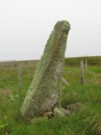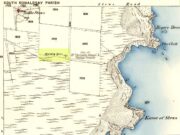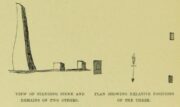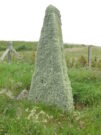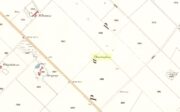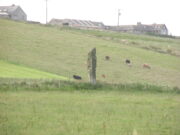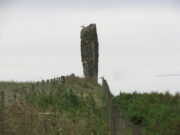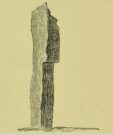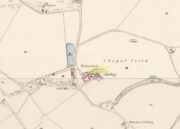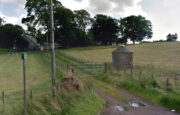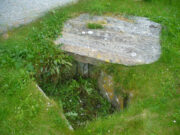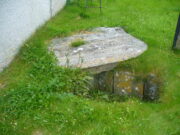Cup-Marked Stone: OS Grid Reference – NN 64894 38308
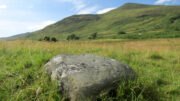
Along the A827 Loch Tay road between Morenish and Lawers, take the track uphill where Carie farmhouse and Tombreck are either side of the road. Walk up this track 2-300 yards till you go through the gate just past the sheep-folds on your left. Ahead of you is a small grassy hillock on your right upon which you’ll find the unimpressive Tombreck-1 carving. Walk down the grassy-slope to the boggy stream and then up the rounded knoll on the other side, where you’ll find a stone that’s been split in two. You’re here!
Archaeology & History
This is another unrecorded carving, found amidst this already large petroglyphic cluster on August 9, 2020. Carved on a stone that’s been spilt in half, three simple cup-marks can be seen on the larger easternmost section, with the lowest of them having a possible short line running towards the cup on the right. It seems that the right-hand (north) side of the stone has also been cut, but there is no trace of this part of the stone on the ground. Additionally, there is the possibility that this stone once stood upright, as evidenced by its very worn rounded top and the larger bottom end of the stone being distinctly lower compared to the ground all round it. But this is speculative.
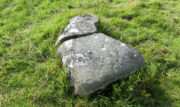
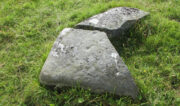
Although the rock is close to being on the top of a rounded knoll, giving good visibility both east and west for a few miles along the extensive grassy ridge (where many other petroglyphs exist), the grandeur of Loch Tay in the glen below is not and could never have been visible from this, or indeed many other carvings on this ridge. I mention this due to the fact that some students are positing that the existence of so many carvings along here may relate to some sort of deification of Loch Tay. But here and at many others along this ridge, the idea simply aint valid, unfortunately.
© Paul Bennett, The Northern Antiquarian
